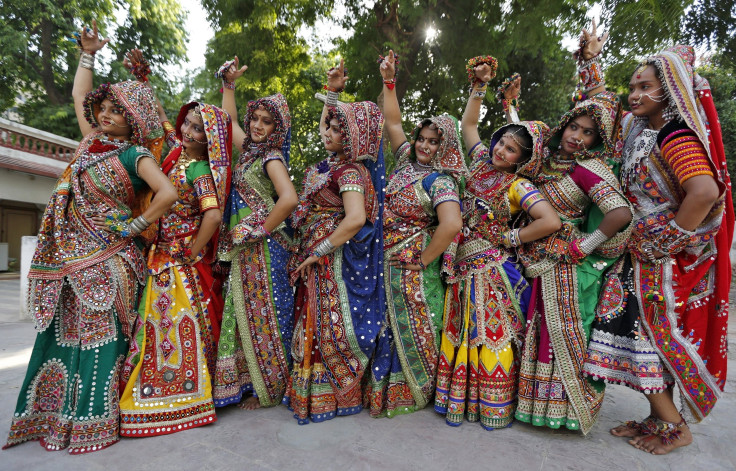Navratri 2017: When Does The Hindu 'Nine Nights' Festival Begin?

Navratri, the nine-day long festival dedicated to several divinities in the Hindu pantheon, begins Sept. 21 this year.
The festival is celebrated across India during the autumn season. While the festival is observed in different states of the country during the same time, the significance behind each celebration differs from one state to another.
Though four seasonal Navratris (which means "nine nights" in Sanskrit) are observed across the year, the one observed post-monsoon — called the Sharad Navratri — in the autumn season is considered to be the most significant and auspicious.
The festival is celebrated in the month of “Ashvin,” according to the Hindu calendar, which typically falls in the months of September and October as per the Gregorian calendar.
In the eastern and north-eastern states of India, the celebration is referred to as Durga Puja. People believe that the Hindu goddess Durga emerged victorious over demon Mahishasura, and thereafter the festival is celebrated as a victory of good over evil.

In North India, the festival is marked by the numerous Ramlila events, where episodes from the epic "Ramayana" are enacted inside temples or in temporarily constructed stages. This performances on this occasion was inscribed by UNESCO as one of the "Intangible Cultural Heritage of Humanity" in 2008.
People all over the country prepare for the nine-day festival of Navratri with new clothes, elaborate decorations at their houses and on the streets, traditional dance performances and fasts.
Fasting is the most common way to celebrate the festival and is also considered to be a way to invoke "Shakti," the divine female energy, which helps to cleanse the body and mind.
However, food is not completely avoided — grains, such as rice, as well as meat, eggs, lentil, legumes, coffee, alcohol and onion and garlic are prohibited.
The festival ends on the tenth day with the celebration of Dussehra.
In the eastern part of the country, on each day of Navratri, one of the nine forms of goddess Durga is worshipped, and the rituals end on the tenth day of Dussehra, when the idols are immersed in water bodies.
The nine forms of goddess Durga include:
- Day 1: Shailaputri, called the daughter of the Himalayas.
- Day 2: Brahmacharini, which symbolizes a woman who pursues sacred religious knowledge.
- Day 3: Chandraghanta, which signifies the one who has a half-moon shaped bell.
- Day 4: Kushmanda, who is the creator of the universe
- Day 5: Skandamata — symbolizes motherhood.
- Day 6: Katyayani — one who is named after the sage Katya, in whose house goddess Durga was believed to have been born in one of her forms.
- Day 7: Kalaratri, considered to be one of the many destructive forms of Durga.
- Day 8: Mahagauri, the wife of Lord Shiva (one of the divine Hindu trinity).
- Day 9: Siddhidatri, one who is known as the provider of supernatural powers.
The celebration and span of Navratri is meant for introspection and purification.
© Copyright IBTimes 2024. All rights reserved.












